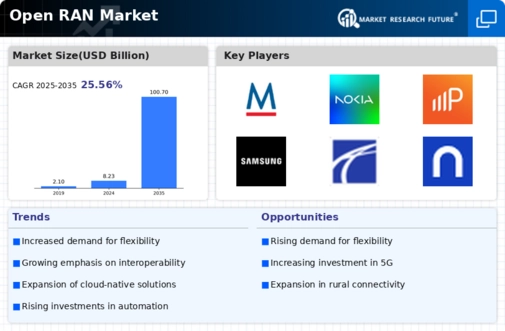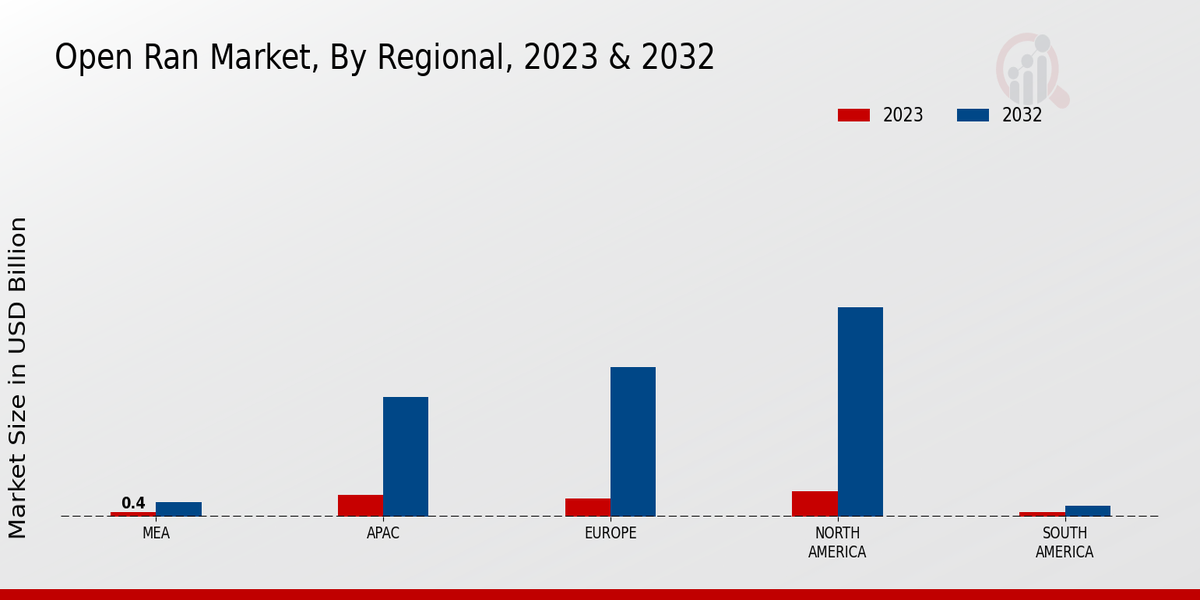Market Growth Projections
The Global Open RAN Market Industry is poised for remarkable growth, with projections indicating a rise from 8.23 USD Billion in 2024 to an impressive 100.7 USD Billion by 2035. This trajectory suggests a compound annual growth rate (CAGR) of 25.57% from 2025 to 2035, reflecting the increasing adoption of Open RAN technologies across various regions. The anticipated growth is driven by factors such as the demand for 5G connectivity, cost efficiency, and government support. As the market evolves, stakeholders are likely to witness a transformative shift in telecommunications, characterized by enhanced flexibility and innovation.
Cost Efficiency and Flexibility
Cost efficiency remains a pivotal driver for the Global Open RAN Market Industry, as operators seek to reduce capital and operational expenditures. Open RAN architectures allow for the integration of diverse hardware and software components, which can lead to significant savings. By leveraging open standards, telecom operators can avoid vendor lock-in and foster competition among suppliers. This flexibility not only lowers costs but also accelerates innovation, enabling quicker deployment of new services. As the market evolves, the potential for cost reductions is expected to attract more players, further stimulating growth in the sector.
Emergence of New Business Models
The Global Open RAN Market Industry is witnessing the emergence of innovative business models that capitalize on the flexibility of Open RAN technologies. Operators are exploring various monetization strategies, such as network slicing and shared infrastructure, which allow for more efficient resource utilization. These models not only enhance service delivery but also create new revenue streams. As the market matures, the potential for diverse business approaches is likely to attract new entrants and stimulate competition. This dynamic environment may lead to a more vibrant ecosystem, fostering collaboration among stakeholders and driving the overall growth of the Open RAN market.
Rising Focus on Network Security
Network security is becoming increasingly paramount within the Global Open RAN Market Industry, as cyber threats evolve and become more sophisticated. Open RAN architectures offer enhanced security features by enabling operators to implement diverse security measures tailored to their specific needs. This adaptability is crucial in safeguarding sensitive data and maintaining user trust. As organizations prioritize security in their network strategies, the demand for Open RAN solutions that incorporate advanced security protocols is expected to rise. Consequently, this focus on security may drive further investments in Open RAN technologies, contributing to the market's growth.
Government Initiatives and Support
Government initiatives play a crucial role in the expansion of the Global Open RAN Market Industry. Many countries are actively promoting the adoption of Open RAN technologies to enhance network security and resilience. For instance, various national policies aim to encourage investment in telecommunications infrastructure, which is vital for economic growth. These initiatives often include funding programs and regulatory support that facilitate the deployment of Open RAN solutions. As governments recognize the strategic importance of robust communication networks, their backing is likely to propel the market forward, creating a conducive environment for innovation and collaboration.
Increasing Demand for 5G Connectivity
The Global Open RAN Market Industry is experiencing a surge in demand for 5G connectivity, driven by the need for faster and more reliable communication networks. As businesses and consumers increasingly rely on mobile data, the transition to 5G becomes imperative. In 2024, the market is projected to reach 8.23 USD Billion, reflecting the growing investments in infrastructure and technology. This demand is further fueled by the proliferation of IoT devices, which require robust network capabilities. The shift towards Open RAN architectures enables operators to deploy flexible and cost-effective solutions, thereby enhancing their service offerings and meeting the evolving needs of users.
























